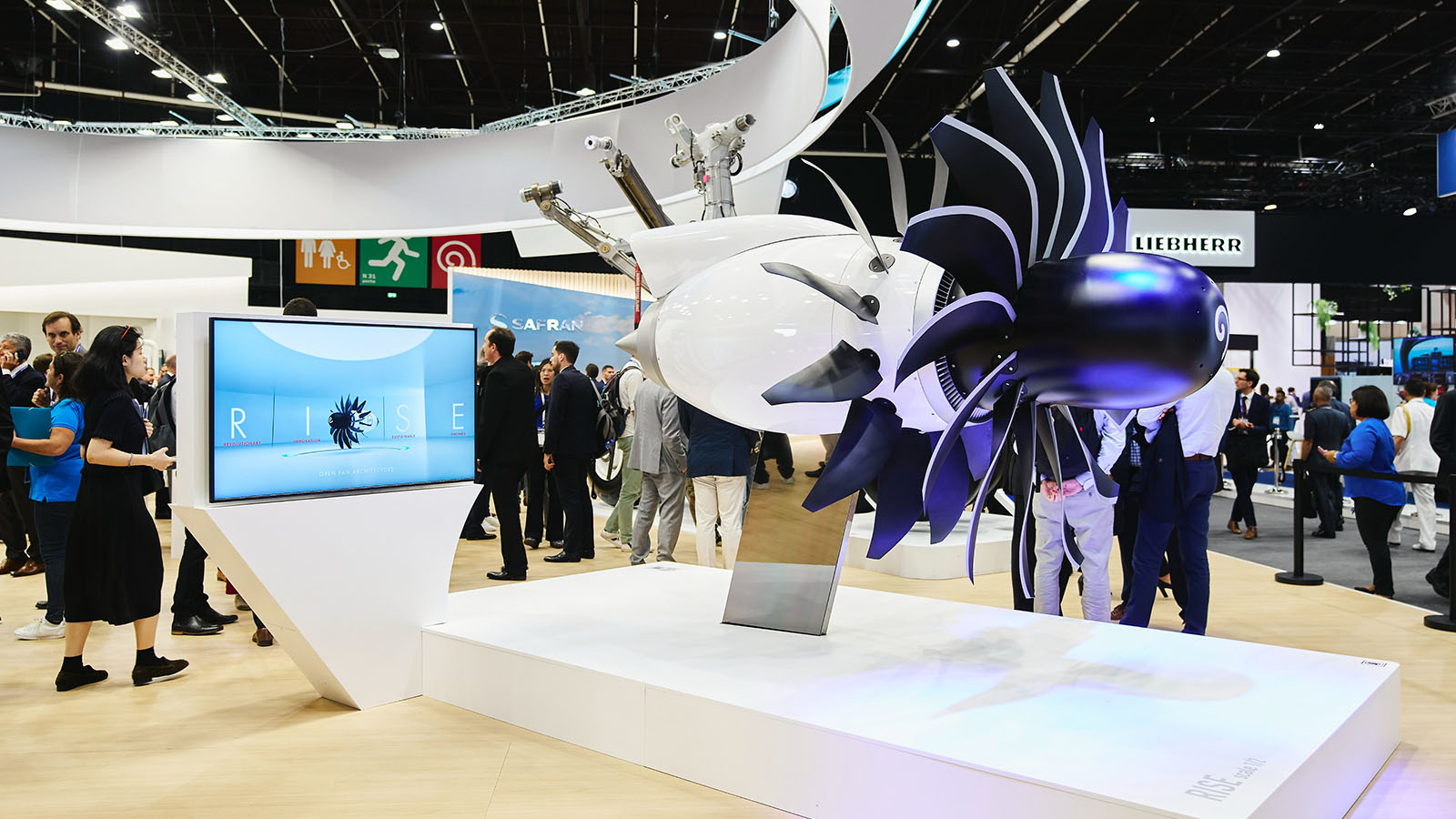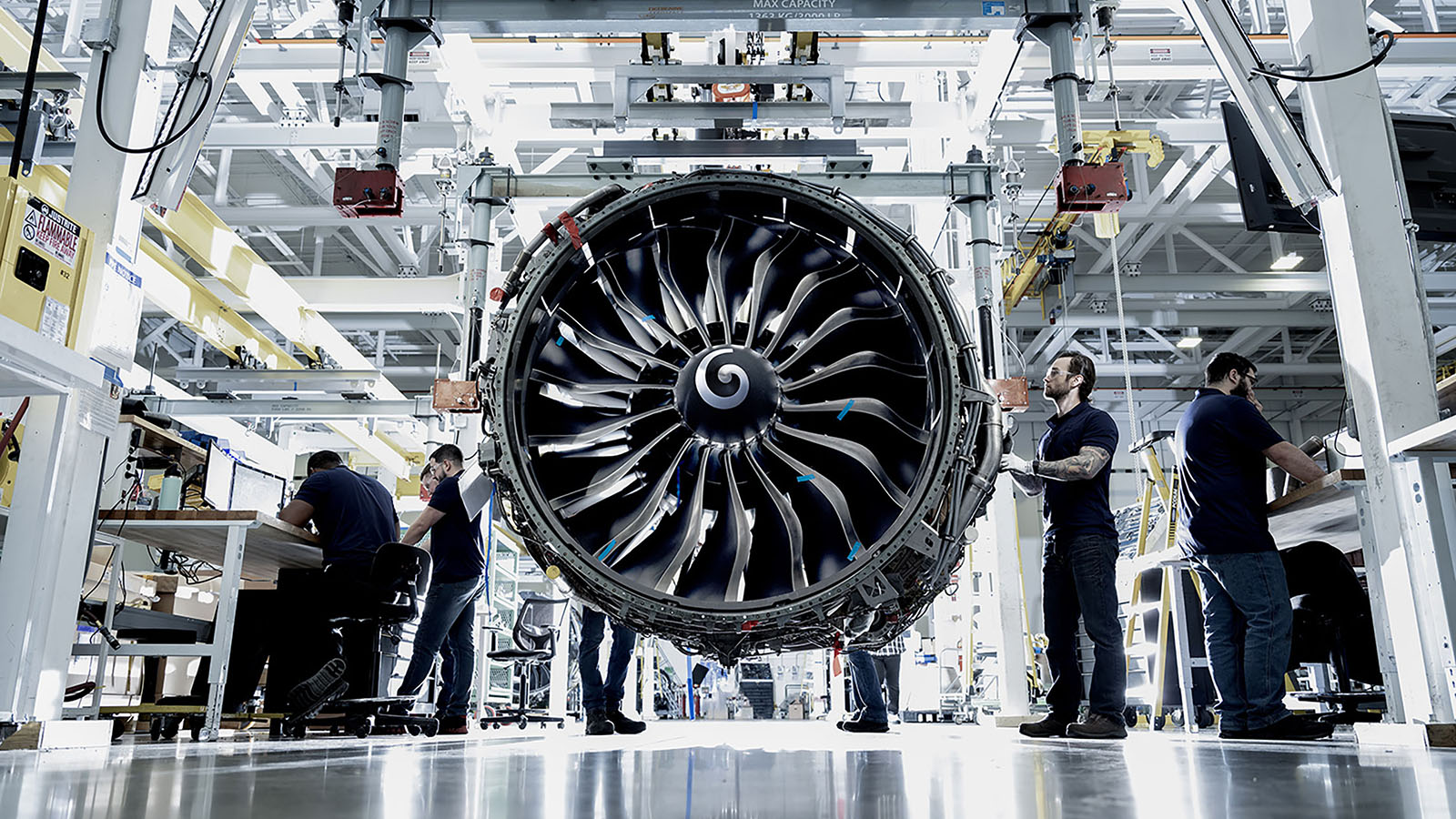Targeting net-zero 2050 with a better engine core
By Keith Button|July/August 2024
To reach carbon emission targets for air transportation, the core machinery of jet engines will need to burn less fuel. NASA and GE Aerospace are combining their resources toward a planned demonstration of technology to do it. Keith Button spoke to those leading the effort.
Sometime in 2028, at a site to be determined, engineers from NASA and GE Aerospace plan to gather in a control room to watch a hybrid-electric engine core start up on a ground stand — and hopefully bring the air transportation industry a step closer to achieving net-zero carbon emissions by 2050.
This core — consisting of a turbofan engine with an electric motor-generator and no front fan — will be called HyTEC, for Hybrid Thermally Efficient Core. It’s being developed under NASA’s larger Sustainable Flight National Partnership, a series of research and development projects and programs in which corporate spending and government tax dollars are matched toward achieving the 2050 net-zero goal. The addition of a conventionally closed front fan or perhaps an open fan could result in an engine design that will power the next generation of single-aisle airliners, such as the expected replacement of the Boeing 737 in about a decade. NASA wants a core design that can reduce fuel consumption by 5% to 10%. GE Aerospace thinks that with the addition of a fan, the resulting engine can boost the reduction up to 20% over the current CFM LEAP engines powering the 737 MAX, which would cut carbon dioxide emissions by 20%.
“We’re focused on single-aisle in [the partnership] because that’s where the bulk of the carbon emissions are,” says NASA’s Anthony Nerone, the HyTEC project manager at NASA’s Glenn Research Center in Cleveland. “There’s just so many of them flying everywhere, and that’s the market opportunity that everybody sees.”
The anticipated improvements in fuel burn and carbon emissions from new engines would surpass previous industry-only advances, such as the 15% fuel efficiency improvement of the LEAP engine over previous designs.
“We’re going to make a bigger leap by working this together with industry than you’ve seen in other new engines that have come out over the last 20 years,” Nerone says. “That’s a really big deal.”
If the engineers succeed, the core will be the first hybrid-electric engine for production aircraft and the first “mild” hybrid-electric engine, meaning that the engine has motor-generators that can both pull power from the engine and add it back, with no battery storage involved, Nerone says, though NASA and GE would not elaborate on how this would be done.
Here’s one possibility, according to Bjorn Fehrm, an aircraft engine industry analyst for Seattle-based Leeham Co.: The motor-generators modulate the different rotation speeds of the two shafts that spin the high- and low-pressure sections of the compressor, the section of the engine that compresses air to be forced into the combustion chamber. This would generate electricity from one shaft while simultaneously powering an electric motor to boost the rotation of the other shaft.
The HyTEC core will also be capable of running on either regular jet fuel or 100% sustainable aviation fuels, or SAFs, such as those made from recycled cooking oil, municipal waste or biomass sources.
The core will provide greater fuel efficiency by providing the same thrust as current turbofan engines, but at a 25% to 30% smaller size. Measured another way, the engine’s bypass ratio — the ratio of the volume of air pushed around the exterior of the engine by the large front fan compared to the volume of air sucked through the core — increases with a shrunken core. Because the most fuel-efficient propulsion is provided by the large fan and not the air through the core, the higher the bypass ratio, the better.
The motor-generators are “another tool in the toolbox” for reducing fuel burn, Nerone says, “and that hasn’t been done before.” Previously, research has focused on how to make the motor-generators more compact and lighter, “but nobody has actually put them on an engine [to] see: Does this work?”
While much of the motor-generator technology had been developed under earlier NASA electric flight programs, the key challenge with HyTEC has been designing a smaller core capable of churning out the same thrust as today’s regularly sized turbofan engines.
In 2021, under HyTEC’s first phase, GE Aviation — now GE Aerospace, one of three standalone companies created by the breakup of General Electric, finalized in April — and Pratt and Whitney were awarded NASA contracts worth a combined $18.8 million to develop several components of the smaller core, with the companies matching the amount to cover the program’s costs. That included making a smaller high-pressure compressor; a smaller high-pressure turbine, in which the hot air from combustion turns the engine shaft; and materials that could withstand the hotter temperatures in the combustion chamber and turbine of a smaller core.
NASA in December awarded GE Aerospace $68.1 million to carry out the next phase of HyTEC. Under the terms of the five-year contract, the company is to match that spending to fund the assembly of component technologies for the 2028 core demonstrator.
The challenge in designing a smaller core is twofold, says Kathleen Mondino, GE Aerospace’s technology maturation leader for HyTEC and other sustainable engine development for CFM International, the 50-50 partnership between the company and Safran.
“You need to look for technology to introduce just to maintain what you lost via scaling, and then you need to have technology that also provides an additional benefit back on top,” she says. “What you’re trying to do is overcome your scaling challenge. But you can’t just stop there.”
The aerodynamics inside the engine change as the core shrinks, and some losses in the efficiency of air flow inside the core grow relatively larger, Nerone says. For example, gaps between the spinning blades in the compressor and the engine casing cannot shrink any further, so when the compressor shrinks, the aerodynamic losses from those gaps become larger on a relative basis.
“We already are at the max of machine tolerances nowadays,” he says.
So in the first HyTEC phase, the engineers turned to improving the aerodynamics inside the compressor and turbine through improved blade design and changes to their casings — the inside surfaces of the cylinder-shaped chambers, Nerone says.
The specifics of those changes and of other technology improvements are GE proprietary secrets, although some of HyTEC’s research might be made public at the end of the project, Nerone says.
To test the aerodynamic improvements, the engineers needed to observe and measure pressure, temperatures and other conditions. So they built test rigs: subsections of the compressor and of the turbine. Where an entire compressor might have seven or 10 spinning discs with blades for compressing the air as it passes through the chamber, a test rig typically has only one, two or three discs to make it easier to place measuring instruments and isolate specific components, Nerone says. With a full-sized compressor or turbine, there isn’t enough room or access to place the instruments, and the high temperatures may damage the instruments. Some of the compressor and turbine test rigs were built with larger discs and blades than their actual design sizes to make them easier to observe and to allow for more accurate measurements. In some cases, the rigs were run at a lower temperature so the measuring instruments wouldn’t melt. Building and testing the subsection-sized rigs also allowed the engineers to isolate components to access them apart from the whole compressor or turbine.
For their compressor test rigs, they spun the bladed discs with a large electric motor instead of the combustion power of a full-fledged engine core. This tactic gave them more control.
“You can go outside of the speed range; you can push your boundary a little bit more,” Nerone says. In an engine, “if you do things beyond the limits, you might blow things up or cause damage.”
Another way that a smaller core can boost its thrust is by running hotter, which can be achieved by reducing the amount of cooling air that is sucked in from cooler sections of the engine to the hotter sections. The task was then to select more heat-resistant materials to either cover the inside surfaces of the combustor and the turbine, or to make the components in them. This would prevent melting or wearing down under the hotter conditions.
They decided to make their selection from a range of ceramic matrix composites, but the question was which in this class would be best. They also needed to select the best environmental barrier coating, which protects the ceramic materials from water vapor that can otherwise rapidly erode the materials.
To identify the best ceramics, they tested the ability of samples to stand up to extreme heat and pressure. They placed samples of the candidate materials in a furnace, heated them up for several days, and then removed the samples and checked them under an electron microscope for cracks and signs of degradation. They also pointed high-powered lasers at samples to heat just their surface —with the other side remaining cool — to see how well they withstood uneven heating. And they heated some samples with a flame similar to a blow torch.
Testing from the first HyTEC phase is still ongoing at NASA Glenn; the plan is to subject ceramics and coatings that stood up the best to testing in a combustor test rig: a chamber that re-creates the combustion, pressure and temperatures inside a turbine engine by forcing burning gases through the chamber. The material that stands up best to the combustor rig testing will be chosen for surfaces or components inside the core, or both — NASA and GE declined to provide details.
Both GE and NASA view HyTEC, and the engines that it could make possible, as groundbreaking.
Achieving 20% better fuel efficiency — the goal for the open-fan engine — “has the potential to be the single greatest generational improvement in fuel efficiency that we’ve ever achieved,” the company said.
Nerone says everyone on the program understands the stakes. “If we’re able to pull this off, we’re going to make a huge impact to aviation and overall to the world.”











